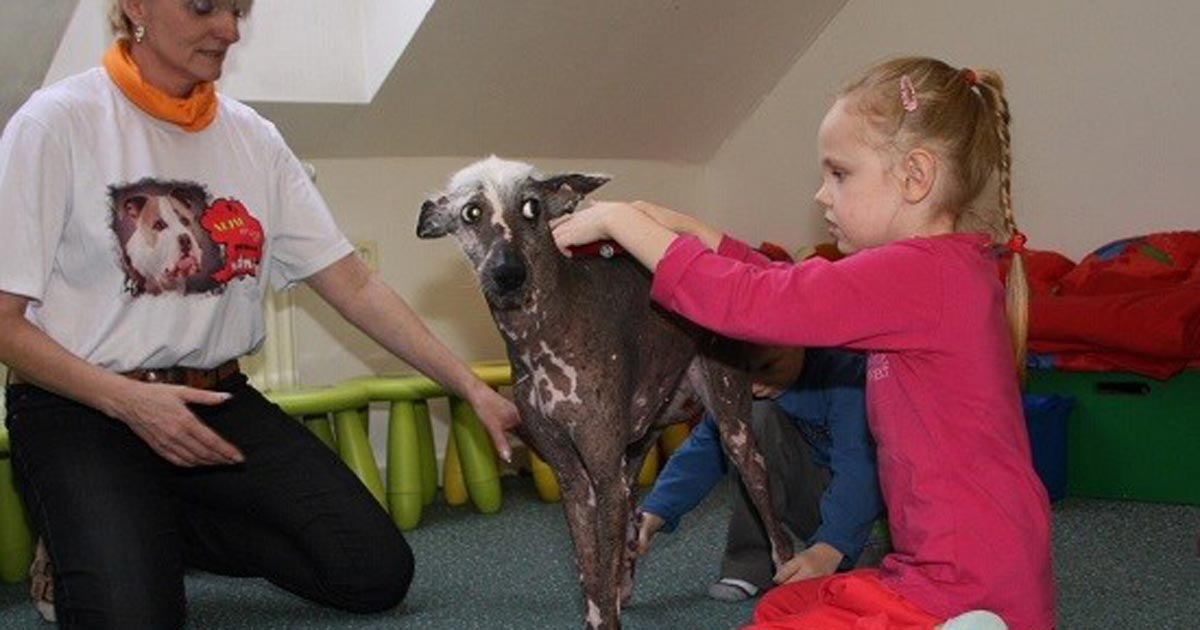Dogs improve speech therapy results in children
Speech therapy is a traditionally recommended approach to improving communication skills in children with developmental dysphasia. However, findings from a randomized controlled trial suggest that introducing animals, such as dogs, into therapy sessions can strengthen the benefits of this intervention.
“The presence of the dog improves the relationship with the therapist as it distracts from the fear of therapy in children and provides them with a form of support during the practice,” Kristýna Machová, from the department of husbandry and ethology of animals at the Czech University of Life Sciences, Prague, said in a press release.
In the study, Machová and colleagues evaluated children aged 4 to 7 years with developmental dysphasia — 38 who received animal-assisted therapy with a dog, and 38 who received traditional speech therapy.
The therapy dog, according to the researchers, was a female, middle-aged Peruvian Hairless Dog named Agáta.
When the dog was included in therapy sessions, children made several significant improvements in prompted behaviors, including filling up their cheeks with air, smiling, and narrowing and shutting their eyes, compared with those who received traditional speech therapy.

Furthermore, the researchers observed that the children who received animal-assisted therapy were more open to communicating with their speech-language pathologist and more frequently made natural expressions and gestures during the sessions.
Machová told Infectious Diseases in Children that if those who conduct speech therapy sessions are interested in incorporating dogs into their practice, happy dogs have the potential to work long-term. These dogs should be well taken care of to ensure that safe and quality therapy is provided.
“Canine-assisted speech therapy has the potential to be an appropriate and complementary method to the conventional approach,” Machová and colleagues wrote. “It especially shows promise in improving orofacial motricity skills. In light of these findings, we expect the extent of animal-assisted therapy to broaden in connection with treating facial motor impairment under various conditions.”
The researchers said more data are needed on animal-assisted therapy with patients who have facial palsy, Parkinson’s disease and other conditions considering these findings. – by Katherine Bortz
Disclosures: The authors report no relevant financial disclosures.
